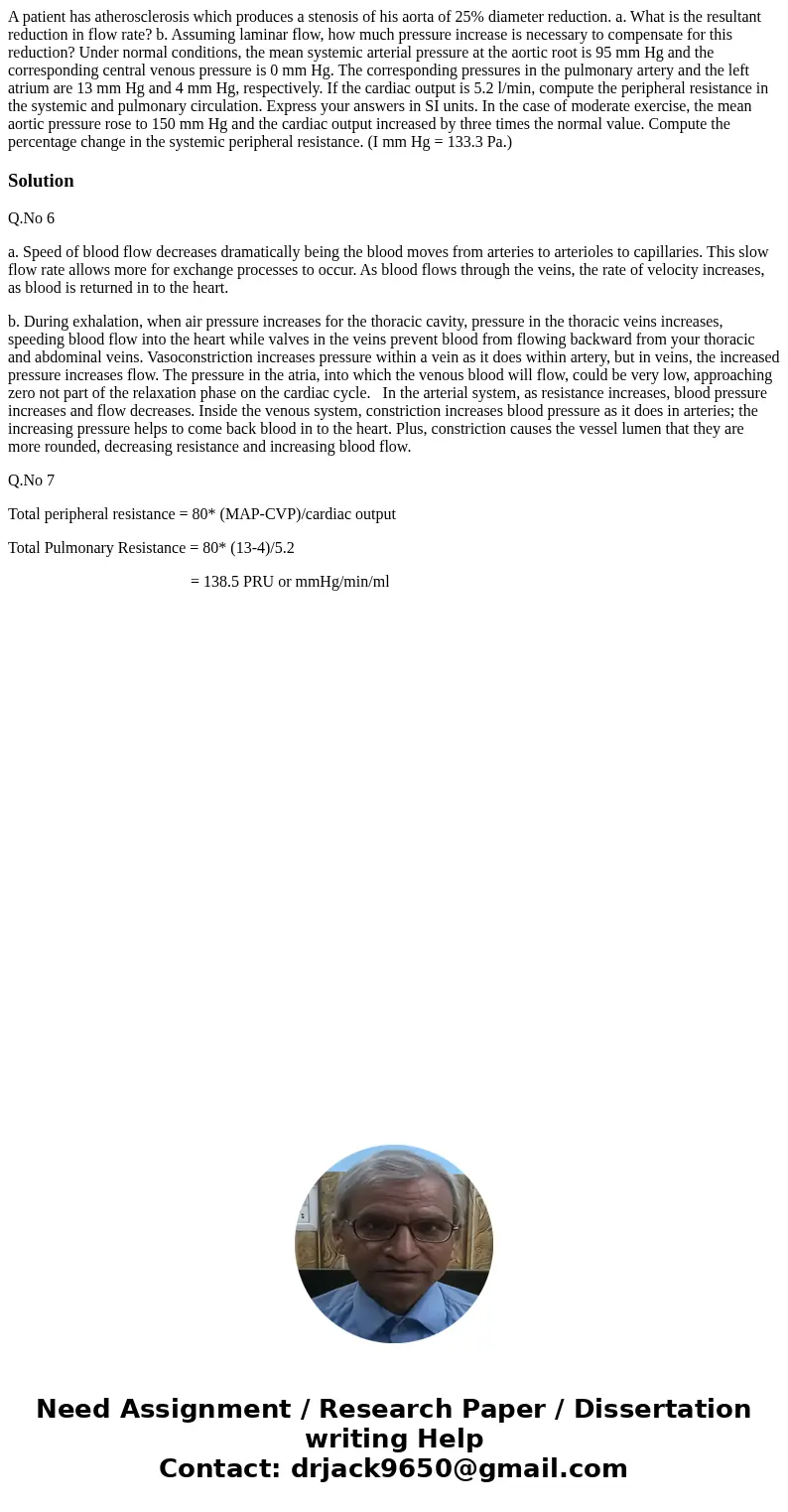A patient has atherosclerosis which produces a stenosis of h
Solution
Q.No 6
a. Speed of blood flow decreases dramatically being the blood moves from arteries to arterioles to capillaries. This slow flow rate allows more for exchange processes to occur. As blood flows through the veins, the rate of velocity increases, as blood is returned in to the heart.
b. During exhalation, when air pressure increases for the thoracic cavity, pressure in the thoracic veins increases, speeding blood flow into the heart while valves in the veins prevent blood from flowing backward from your thoracic and abdominal veins. Vasoconstriction increases pressure within a vein as it does within artery, but in veins, the increased pressure increases flow. The pressure in the atria, into which the venous blood will flow, could be very low, approaching zero not part of the relaxation phase on the cardiac cycle. In the arterial system, as resistance increases, blood pressure increases and flow decreases. Inside the venous system, constriction increases blood pressure as it does in arteries; the increasing pressure helps to come back blood in to the heart. Plus, constriction causes the vessel lumen that they are more rounded, decreasing resistance and increasing blood flow.
Q.No 7
Total peripheral resistance = 80* (MAP-CVP)/cardiac output
Total Pulmonary Resistance = 80* (13-4)/5.2
= 138.5 PRU or mmHg/min/ml

 Homework Sourse
Homework Sourse